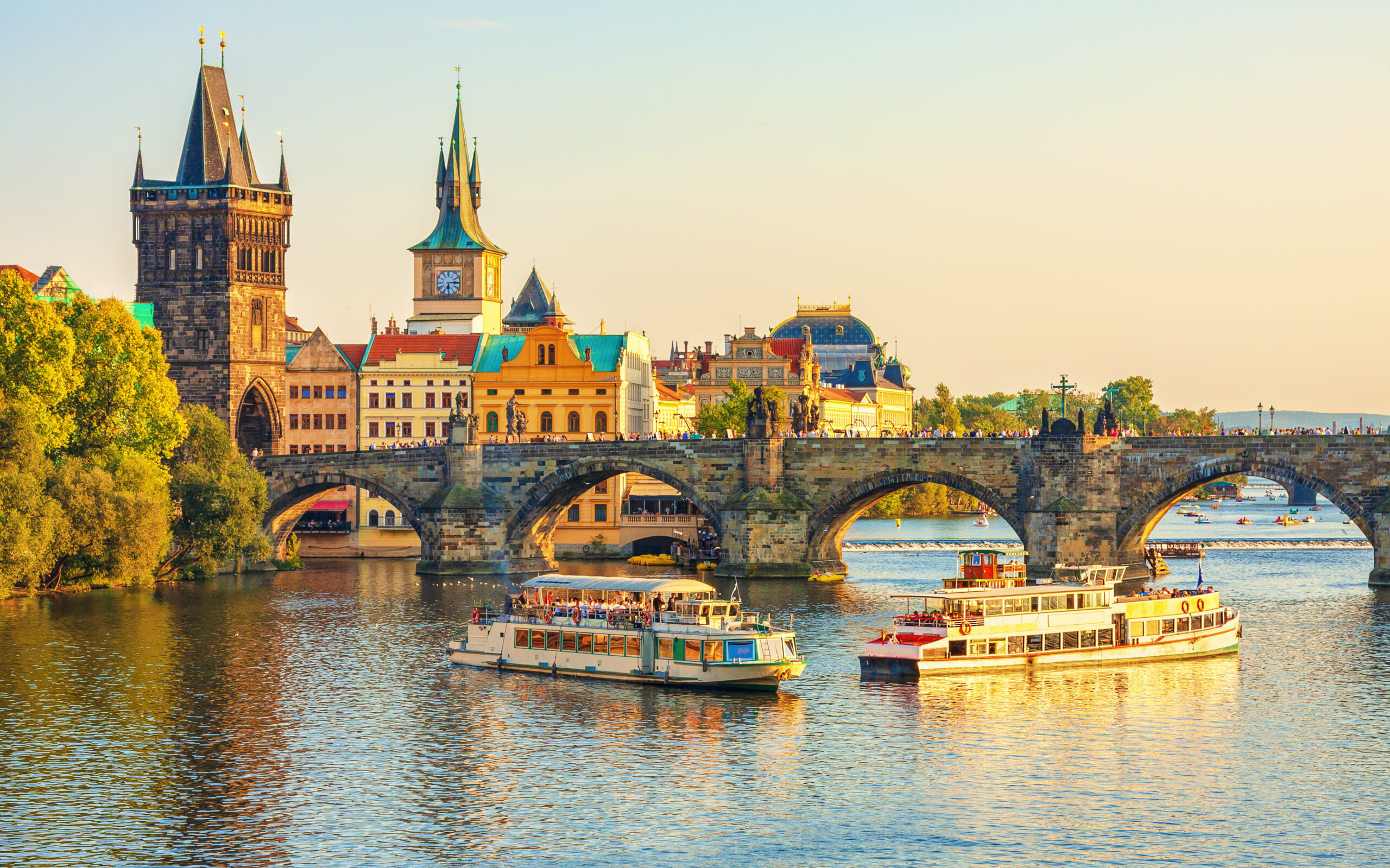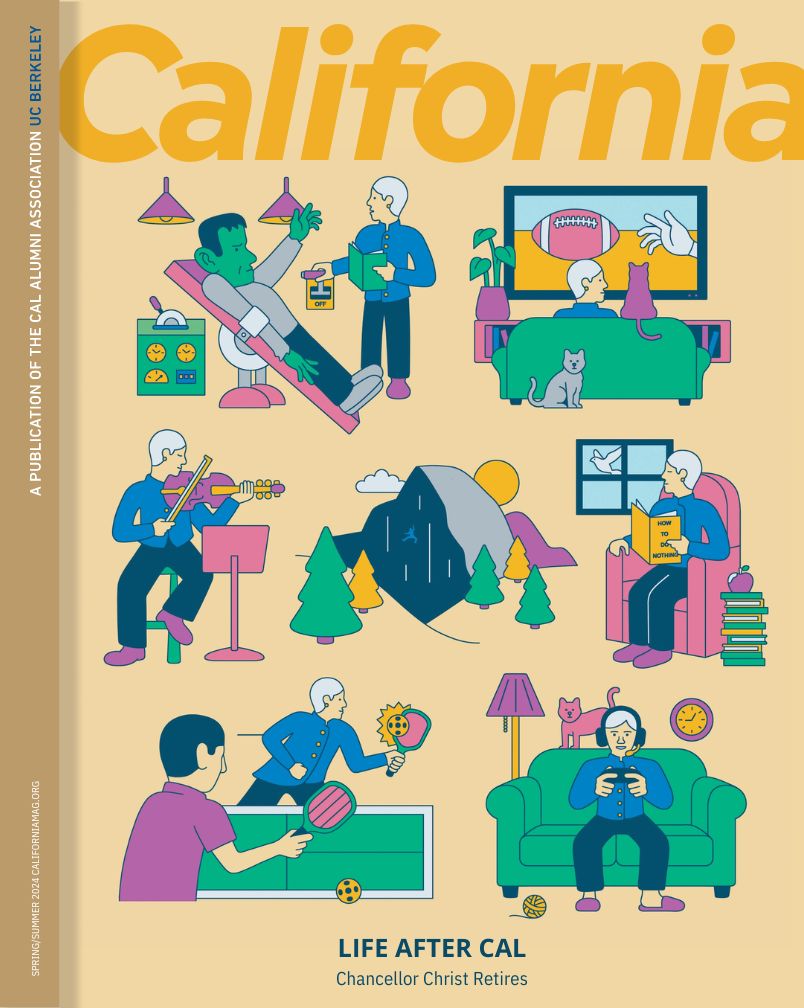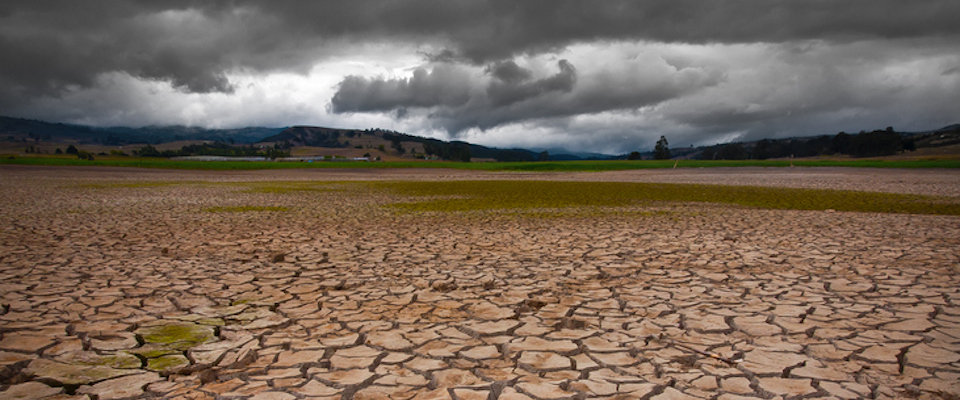Author’s prologue
The interviews for this story were all conducted prior to the 2016 presidential election, at a time when the likely outcome appeared quite different. One of the sources was so certain about what would transpire on Election Day that he referred several times to “President Clinton’s energy plan.” The “other option,” he noted, was “so unattractive” as to not bear thinking about. For climate change activists, no truer words could be spoken. The actions taken by President Barack Obama’s administration to tackle climate change now appear to be in great jeopardy. The conclusion of this article—that there is a viable path forward to mitigate the worst possible impacts of climate change—still holds, but at this point it does not seem likely that a Trump administration and a Republican Congress will follow that path.
As I walk into her office, Inez Fung is staring at a huge flat-screen monitor jam-packed with columns of data and software code.
“What do the numbers mean?” I ask, hoping the answer will shed some timely light on Fung’s research into climate change.
She shrugs. “You don’t want to know.”
It’s not immediately clear whether she is implying that the story told by the data is too scary to share, or too complicated to explain to a layperson. The answer that emerges over the course of our conversation seems to be a little of both.
Fung has spent her career exploring how carbon dioxide generated by human activity circulates through our planet’s atmosphere oceans, and land-based ecologies. The numbers on the flat screen represent the state of the art: data gathered by an orbital satellite launched in 2014 that measures emissions with unprecedented precision. Along with her graduate student Stephanie Wuerth, Fung can now track exactly where emissions are being generated and where those emissions end up.

The research will be useful, she explains, for policy efforts aimed at mitigating climate change. The better we are able to pinpoint where emissions come from, the better we’ll know whether emitters are meeting their commitments to reduce them.
The data will also help answer much larger questions. While the basic physics of how greenhouse gas emissions contribute to higher temperatures have long been accepted by the vast majority of climate researchers, serious uncertainties remain. For example, the best guess is that right now, every year, the ocean absorbs about 25 percent of all new CO2 emissions. But what if the ocean reaches saturation and its capacity to absorb CO2 suddenly stops? Existing forecasts of how hot it will get will have to be radically readjusted.
And maybe that’s the part I don’t want to know? Because even without a new worst-case scenario, Fung is pessimistic (or perhaps just realistic) about the world meeting the goals it has already agreed to in treaties, such as the 2015 Paris Agreement in which governments pledged to hold global warming to 1.5 (or, at worst 2) degrees Celsius over the historical average.
“The Paris Agreement is important to get us to slow down,” says Fung. “But with what we have already put in the atmosphere … 2 degrees is gone. Even if you slow down current emissions, overall emissions are still increasing. That’s how things work, and the land and ocean cannot remove that CO2 fast enough.”
“I have a knot in my stomach all the time,” says Inez Fung. “I’ve been alarmed since the 1980s.”
The gloomy assessment made me think that the life of a climate scientist must be a kind of anxiety minefield and towards the end of our interview, I ask Fung if her research has affected the way she goes about daily life. “I have a knot in my stomach all the time,” she says. “I’ve been alarmed since the 1980s.”
If you’ve been paying attention, you may feel sick to your stomach as well.
As of this writing, 2016 is on track to become the hottest year since modern temperature records have been kept. Meanwhile, glaciers and ice sheets the world over are melting and sea level is rising inexorably. We can’t stop these changes altogether, and even slowing the pace of change will require efforts on a scale humanity has never attempted. If that doesn’t distress you, it should.
For this story, I traipsed back and forth across the UC Berkeley campus, interviewing a half-dozen scientists, public health specialists, engineers, and economists about the current realities and future prospects of climate change. Honestly, I expected to quail before an unrelenting litany of doom, but the message I heard was more nuanced. The future may look grim, but it isn’t set in stone. And amid all the sobering statistics, there is still cause for hope.
My interview subjects repeatedly reminded me that Barack Obama’s landmark 2014 achievement in getting China to agree with the U.S. to limit emissions—an essential preliminary step necessary for making the Paris Agreement possible—may end up being his most important legacy as president. And just a few days after I began my reporting, California Governor Jerry Brown signed into law an extraordinarily ambitious slate of climate-change legislation. At the same time, solar and wind power are being deployed at accelerating rates and a future where electric cars are the norm seems more likely every day.
There is, I was told, a roadmap for us to follow: Keep fossil fuels in the ground; restructure the global economy around a carbon price that properly penalizes emissions; and invest in the basic science necessary for new technological breakthroughs.

That said, no one sugar-coated the overall challenge. There’s no getting around it: The world will get warmer and people will suffer.
In 2004*, glaciologist Kurt Cuffey chartered a plane to fly over Alaska and get a firsthand look at the local glaciers. He recounted his observations for the San Francisco Chronicle in an article that is still pinned next to his office door. “It is quite stunning to see how the vast majority of glaciers have retreated and thinned substantially,” he wrote.
I sought Cuffey out because I wanted to confirm something Inez Fung had told me: That in the past five years climate change has been accelerating faster than scientists had previously forecast, and the most obvious proof of this could be found in Earth’s diminishing cryosphere.
He concurred.
“The big glaciers which drain the Greenland and Antarctic ice sheets out to the ocean have started to flow faster,” said Cuffey, “and that’s transferring more ice out to the edges where they become icebergs, and that contributes to sea-level rise.”
So what’s next, I wondered? What happens in a world where we hold warming to a 2 degree Celsius rise? And what happens if we don’t, and temperatures spike by, say, 4 degrees C?
When climate activists talk about keeping the rise in temperatures to 1.5 or 2 degrees C (or 2.7 to 3.6 degrees Fahrenheit), the numbers may seem trivial to people who are used to experiencing vastly larger shifts in a single day. But to a climate scientist, even these small differences have huge, potentially catastrophic implications.
“The difference between 2 degrees C and 4 degrees C is enormous,” said Cuffey.
“You absolutely don’t want to be defeatist,” Kurt Cuffey admonished. “If, over the next several decades, we reduce the rate that we are sending carbon fossil fuel into the atmosphere by shifting energy production to solar and wind and nuclear, we could probably limit further warming to a degree.”
At 2 degrees, mountain glaciers in the Rockies, the Alps, and the Andes will be gone, he said. Melting ice in Greenland and Antarctica will contribute to accelerated sea-level rise, perhaps as much as a foot by the end of this century. But at 4 degrees, said Cuffey, “you are getting dangerously close to a situation where all these big ice shelves around the mainland of Anarctica would be warm enough during summers that they would disintegrate.” At that point, even Himalayan glaciers would disappear, said Cuffey, and sea level could “easily” rise by 10 to 20 meters.
“The difference in the moral and ethical imperative,” said Cuffey, “between keeping the planet to a warming of 2 degrees versus keeping it to 4 degrees or 6 degrees is a very strong one.”
Mindful of Fung’s pronouncement that 2 degrees is “gone,” I asked Cuffey whether he thought it realistic to think we could avoid hitting 4 degrees.
“You absolutely don’t want to be defeatist,” he admonished. “If, over the next several decades, we reduce the rate that we are sending carbon fossil fuel into the atmosphere by shifting energy production to solar and wind and nuclear, we could probably limit further warming to a degree.” Doing nothing would be like finding you had cancer and simply watching it “take over your body” and destroy your vital organs.
“I think if there is one thing that’s more cause for optimism than anything else,” Cuffey said, “it’s that the technologies and economics for alternative energy seem to be improving rapidly. California is definitely leading the way on climate change, and I think it’s a great thing.”
SB 32, signed into law by Governor Jerry Brown on September 8, commits the state to lower its emissions to 40 percent under 1990 levels by 2030. It builds on a bill Brown signed in 2015 that will require California’s electrical utilities to get 50 percent of their power from renewable sources, also by 2030, not to mention other climate change legislation dating back to 2006.
These laws work. In 2015, 26 percent of California’s retail electricity came from renewable sources, up from just shy of 12 percent in 2009. Considering that the state is the fifth-largest economy in the world, that is no small achievement.
In their offices at the Department of Earth and Planetary Sciences, Inez Fung and Kurt Cuffey spend their days trying figure out how climate is changing the planet. Meanwhile, over at the School of Public Health, Kirk Smith worries about the welfare of the human beings who live on it.

“The mantra in the climate business,” said Smith, a professor of global environmental health, “is that there are three things you can do: there’s mitigation—stopping the emissions, or capturing them. There is adaptation—getting yourself ready, building dikes and air-conditioned buildings and so forth. And then there’s suffering.” Don’t do enough of the first two, and all that’s left is the pain.
Smith has devoted his professional life to improving public health in the developing world. His particular focus has been on air pollution, a problem that has been easier to tackle than climate change. When the air is unbreathable, governments feel pressure to take action. Climate change poses a knottier problem, because the worst impacts are yet to come, and humans, said Smith, are generally not very good at dealing with threats more likely to be faced by their grandchildren than themselves. Solving “the foresight problem,” he said, requires thinking about how to “bring the future backwards so people can see it.”
Smith’s most recent strategy: confront the world with the looming end of the Summer Olympics. Right smack in the middle of the Rio Olympics, Smith co-authored a paper published in The Lancet arguing that as the planet keeps warming, it will become more and more dangerous to hold athletic events during the heat of the summer. By 2085, according to the paper, only three cities in North America would be plausible hosts of a Summer Olympiad—San Francisco, Calgary, and Vancouver. (For obvious reasons, the Winter Games are even more problematic.)
The paper made a splash, but it was a Trojan horse. The health of elite athletes and potential disappointment of spectators was not Smith’s primary concern. He’s more worried about the wellbeing of the people who build the stadiums and grow the food that athletes eat. More than half the world’s labor force works outdoors, he reminds me, in construction and agriculture.
“The problem is that this all has to be driven by policy,” says Long. Until markets are set up to give investors real incentives to fund research into climate solutions, Long said, “there is no business reason to do this.”
A hotter world could lead one of two outcomes. Either workers are forced to labor in dangerous conditions, resulting in disability or death, or the work simply doesn’t get done, meaning a “loss of productivity that will be the single biggest economic impact of climate change.”
“Climate change,” concluded Smith, “is the most regressive tax in human history. The poor get the worst hit.”
Still, Smith is not a pessimist. He’s seen vast improvements in global public health over the course of his career, including enormous gains in the standard of living of people in China, India, and Africa. It’s obvious to him that humans can make a positive difference in their environment.
It won’t be as simple as rescheduling marathons for the middle of winter, but neither is it without a solution. “It will be difficult,” he says. “But not technically impossible.”
What exactly is technically possible? I sought out Jeffrey Long, a professor of biomolecular engineering with joint appointments at UC Berkeley, the Lawrence Berkeley National Laboratory, and the Department of Energy–funded Center for Gas Separations. I was looking for someone who might be able to answer a nagging question: Can the kinds of technology that got us into this predicament also help get us out of it?
Long’s lab specializes in the creation of materials known as “metal organic frameworks” (MOFs), compounds characterized by a porous sponge-like structure that will let some gas molecules pass through while trapping others. MOFs could become a crucial tool for capturing CO2 emissions at the source.
Long envisions a future in which devices made out of his lab’s new materials are installed in smokestack flues. The single largest producer of CO2 emissions, he pointed out, are power plants that burn coal. Replacing them with renewable energy sources will take decades, but added “we just don’t have decades where we can keep emitting CO2.”
Using MOFs, harmless gases could be allowed to pass while CO2 molecules would be trapped and absorbed for eventual sequestering—stored away, perhaps in depleted oil wells or aquifers, a technological challenge in its own right. The critical advantage of such a technology, said Long, is that, in theory, it could be deployed at much lower cost than currently available methods of carbon capture.

But the path from basic science to breakthrough technology is a lengthy one.
“Getting this from a lab bench to a power plant takes a lot of time,” said Long. While he and some former students have successfully founded a startup to commercialize the technology, it’s hard to attract funding for projects that can take a decade to mature, and with no sure-fire market for the product when it’s ready. Without the right regulatory structure in place, getting power plant operators to focus on carbon capture at the expense of their bottom line is an uphill battle.
“The problem is that this all has to be driven by policy,” says Long. Until markets are set up to give investors real incentives to fund research into climate solutions, Long said, “there is no business reason to do this.”
The day after I spoke with Jeffrey Long, I met Tamma Carleton, a doctoral student in the Department of Agricultural and Resource Economics, for coffee near North Gate. Carleton and her adviser, Solomon Hsiang, had just published in Science a massive review of recent research linking climate to a vast array of current social and economic impacts.
Hsiang, only 32 years old, has already built a formidable reputation for using computational analysis of large data sets to make predictions about the probable effects of rising temperatures. His findings show that, as the mercury climbs, economic inequality will increase, violent conflicts will spread, and the migration crisis will grow.
What made the recent Science paper different, Carleton told me, was that it covered impacts that are already being felt—everything from the effect of rainfall on land invasions in Brazil to increasing mortality rates in India.
“There is a lot of work out there on how much your grandchildren are going to suffer in a variety of different ways,” said Carleton. “We really wanted to drive home the fact that climate matters a lot right now.”

It may sound depressing, but Carleton finds her work invigorating.
She said that the ability to measure climate impacts with greater economic and statistical precision means that it is now possible to calculate a real “social cost of carbon”—to put a clear, quantitatively rigorous price tag on the impact of every unit of carbon dioxide loosed in the atmosphere.
As we begin our interview, Dan Kammen, the director of the Renewable and Appropriate Energy Laboratory at Berkeley, unrolls a poster for a global warming documentary called Time to Choose on the table between us.
Kammen is an executive producer of the documentary, which was co-written and directed by Cal alum and Academy Award–winner Charles Ferguson. So it’s no surprise that he endorses its “we can do this” message. What is surprising is how forcefully he makes the case.
“Things are changing much faster than the skeptics and naysayers think,” said Kammen. “Price changes in solar are transformative. A mixture of solar and wind, sustainable biofuels if that’s possible, plus sustainable, more distributed hydro, plus very large amounts of energy storage—an area that is innovating as fast today as solar was at its peak—is a very interesting cocktail that gets us quite far along….”
While in one breath he concedes that “we’re behind schedule as a global community today,” in the next he reminds that, “what is critical is the rate of improvement.”
One of the things Kammen’s lab studies is the rate of innovation in renewable energy technologies. How quickly are improvements in energy efficiency occurring? How fast is battery storage expanding? How speedily is the cost/benefit ratio for carbon capture improving?
To hold warming to 2 degrees, he says, we need to improve energy efficiency by 2 percent a year. Every year, in other words, the amount of energy we would need to achieve a given task—cooling a house, driving to the grocery store, washing our clothes—needs to drop by 2 percent.

The world currently averages an energy improvement rate of about 1 percent a year, said Kammen. That’s not enough, clearly. But California improved energy efficiency at a rate of 4 percent a year for an entire decade, Kammen stresses. And China achieved a rate of 5 percent over a similar time frame. It’s doable—if governments are determined to lead. But it would help—a lot—if markets were structured to encourage the trend.
Economists believe that if consumers are forced to pay extra for carbon-intensive products they will swiftly redirect their purchases towards cheaper alternatives, or otherwise conserve on their energy consumption. With a little nudging of the market, the global economy will start lumbering in the right direction.
Of course, there are some potentially disturbing implications to the idea of a carbon-priced world. For example, it’s possible to imagine a future in which goods like airline travel, beef, and air-conditioning—already luxury items in much of the world—could be priced out of reach for all but the rich.
Kammen’s hope is that the innovations spurred by correctly structured market incentives will help us escape that bottleneck. But in the end, no matter what we do, the poor will bear the brunt of it. “We are already committed to a lot of climate change and the saddest part of the story is not that we could have avoided it by acting sooner, but that the poor who have the least voice will suffer the most.”
He pauses, looks down at the table and the Time to Choose poster.
“We can do it,” he says. “But there will be a lot of suffering along the way.”
Andrew Leonard is a Bay Area journalist whose work has appeared in Wired, Rolling Stone, Newsweek, and Salon, where he was on staff for many years.
* Editor’s note: In the print version of this story, the sentence reads: “In 2004, when there was still a raging debate over whether or not climate change was real… .” It has been removed here because it is inaccurate. Certainly, in 2004, the topic of global warming was as controversial as it is now. And, then as now, many scientific uncertainties remained concerning the details. (See for example, our reporting in 2011, on Berkeley physicist Richard Muller’s Earth Surface Temperature Project which scrutinized the reliability of the modern temperature record.) By 2004, it is fair to say that climate change had become a political lightning rod; however, there was no “raging debate” among climate scientists as to whether or not climate change was real, as evidenced by the work of the Intergovernmental Panel on Climate Change, which delivered its Third Assessment Report in 2001. As for Dr. Muller, a year after we reported on his skeptical review of the temperature record, he wrote this op-ed in The New York Times entitled “The Conversion of a Climate-Change Skeptic.”



















